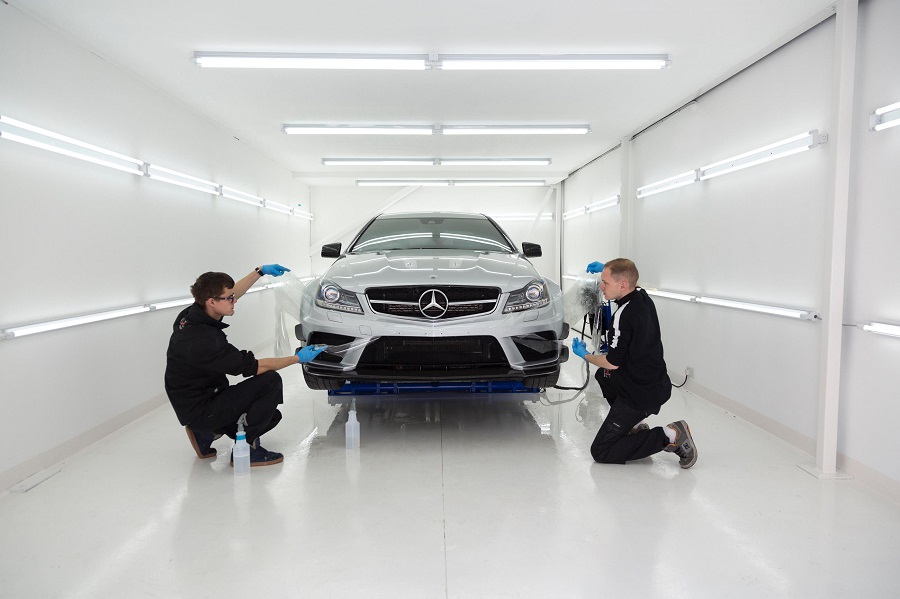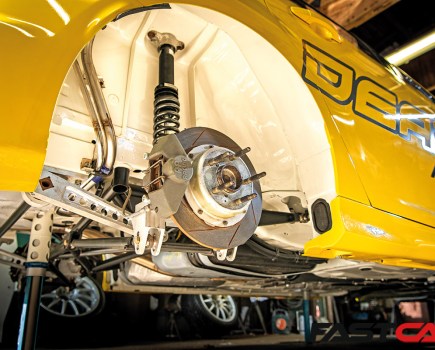The open road can take its toll on a car’s appearance, but PPF can help. Want to know more? Here’s car paint protection film: explained.
The world of car modification is more advanced now than ever before. Crazy internal strengthening and ECU wizardry means that cars with four-figure horsepower outputs are no longer a shock to the system. Suspension wise, you can have your cake and eat it too, with bags that offer either a slammed stance or track-poised handling at the push of a button. Even the aesthetic elements of our rides are more intelligent now – wrapping allows owners to change the look of their car as often as they change their own clothes. Ok, that one might be a slight exaggeration (we hope), but you get the point.
Paint protection film is another step down the ever-evolving path of car modifications, but rather than adding to your ride’s character, its purpose is instead to protect what you’ve already built. So, if you’re not about that patina lifestyle and would rather your car looked factory-fresh, keep reading to find out more…
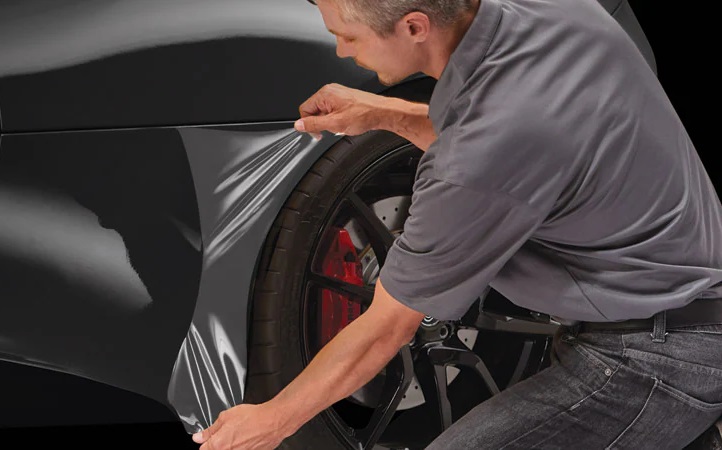
What is Car Paint Protection Film?
Generally, car paint protection film is constructed from four layers of material. At the base, there’s the polyester release liner, which you remove to expose the acrylic adhesive that sticks the film to the car’s surface. The actual film itself is a sheet of polyurethane (about 0.1-0.2mm thick) which then has a clearcoat on top.
Not all car paint protection films are born equal though. Some give you the option of either a glossy or matte finish. Plus, in fancier applications, the clearcoat may even be accompanied by something called an ‘elastomeric polymer’ which gives the film a sort of self-healing quality. I kid you not! More on that later…
Whatever quality of film you opt for though, the application process isn’t the sort of job a novice could do on their driveway. So, unless you really back yourself not to mess it up, we’d suggest visiting a specialist to do all the leg work.
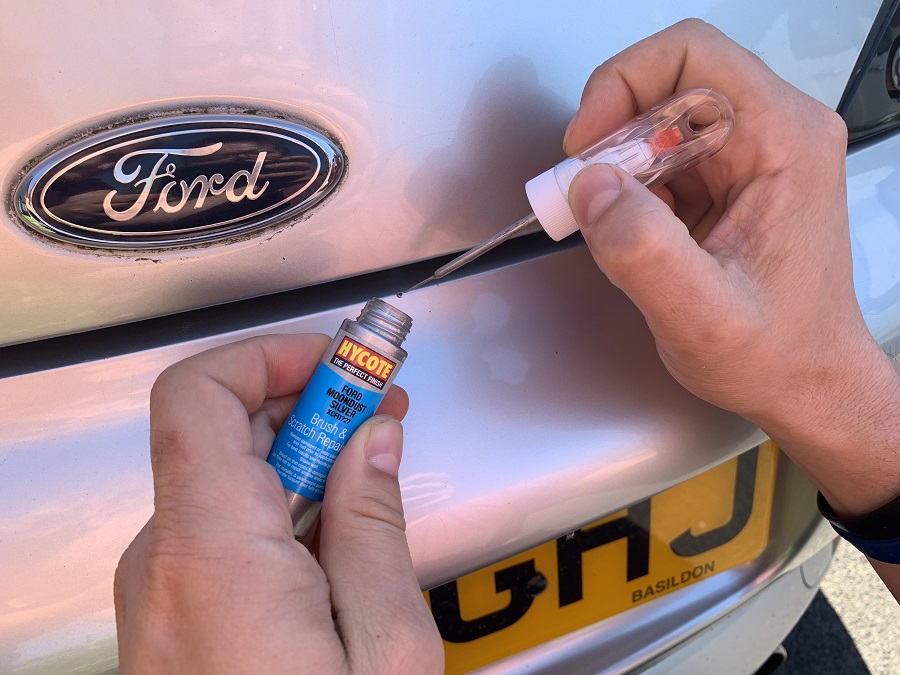
Paint protection film will guard against light chips, meaning no more need to do jobs like this…
What are the benefits of car paint protection film?
There’s a whole roster of reasons why you might want to apply paint protection film to your car. These are some of the most common benefits that people site when queried about it:
- The film acts as a guard from debris like small rocks, protecting your paintwork from minor chips and scratches.
- If the film you use has elastomeric polymers infused into it, any surface scratches indented into the film itself will ‘self-heal’ and return to their original form. This happens when the film is exposed to heat, either over time in direct sunlight, or through the use of a heat gun if you want to speed up the process.
- The film protects your paintwork from squished bugs and bird droppings, which you might consider fairly harmless, but are actually quite acidic (and potentially corrosive).
- If you live in a particularly sunny area, the film acts as another layer of defense from oxidization caused by high levels of UV.

How Much does PPF cost?
Like vinyl wrapping, the cost of applying paint protection film to your car will vary depending upon its size. A Ford F150 is going to cost a fair bit more than a Mini Cooper S, for example. Generally speaking though, if you want to envelope your whole car in protective film, it’s going to cost you anywhere from around 3k-5k, or potentially even more.
We know what you’re thinking – that’s a LOT of cash. Film suppliers understand this too, and as such, you can cut down on costs by only targeting certain areas of your car, rather than the whole thing. A common option is to go for the ‘clear bra’ which simply covers the front bumper and lower segment of the hood (two areas which are particularly vulnerable to scratches and stone chips).
On the other hand, you can certainly make an argument for a full paint protection film being a worthwhile investment. After all, it should be a one-hit wonder. Most reputable suppliers promise that their films will last for ten years, or even more if your keep up with your detailing schedule. So, although it’s an expensive initial blow, you’ll only be paying that cost once every decade.
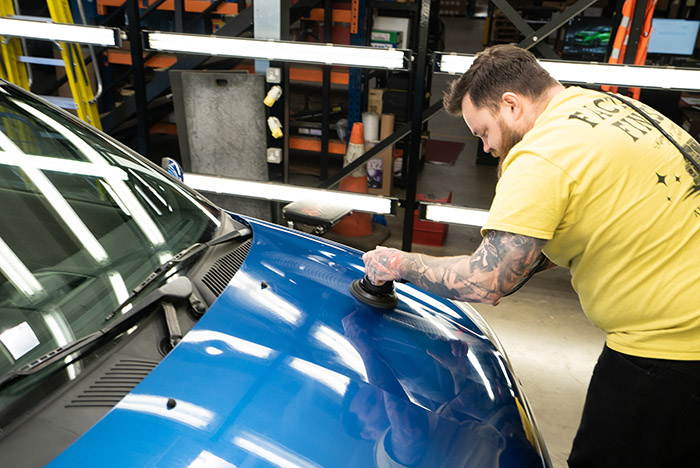
Are there any other ways to protect car paint?
If the idea of spending that kind of money on paint protection film makes you feel sick, you aren’t alone. So, what if your budget doesn’t quite extend that far? Happily, there are a couple of alternative paint protection solutions that won’t harm your bank balance quite so much…
Ceramic Coatings
The next step down would be to opt for a professional ceramic coating. Don’t get me wrong, this is still a pretty hardcore form of paint protection as the coating will chemically bond with the surface itself. As such, if you want the best results from the most potent coatings, you’ll definitely need a pro to apply it for you – an incorrectly applied ceramic coating can quickly result in you needing to sand the bodywork down for repair! Still, if done right, the effects of this ‘glass-like’ coating are well worthwhile. Not only will your car’s exterior be more durable, it’ll also gain a hydrophobic quality too. Best of all, professional coatings can last for multiple years.
Make no mistake though, while it is possible to save money with coatings compared to protective films, we’re still talking within the region of thousands of dollars or pounds to get the job done, rather than hundreds, or preferably tens.
D.I.Y. Detailing
Instead, if you really want a bargain, the cheapest forms of paint protection available are D.I.Y. options that you can apply from the comfort of your own home.
This includes less chemically intense versions of the sort of ceramic sealants mentioned above, usually mixed into sprays that you can administer through a snow foam lance. Or, you could opt for a simple car wax which you massage onto the panels with an applicator before buffing off. While it may seem comparatively old school, it’s still a great way to give your car’s exterior an extra sacrificial buffer from the elements.
To learn more about how to use car wax, check out our handy guide on the subject.

